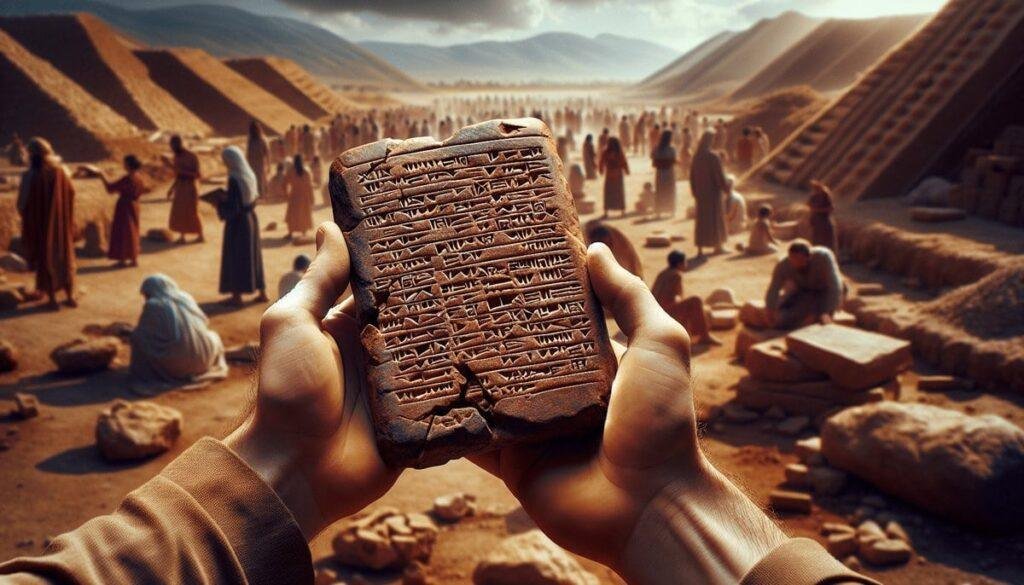What would you do if something sacred turned out to be a vessel of disaster? It’s a thought-provoking question, especially when considering the Ark of the Covenant, one of the most revered and yet misunderstood artifacts in biblical history. The Ark is steeped in layers of meaning and significance, and its misuse, as history teaches us, can carry weighty consequences.

The Historical Significance of the Ark of the Covenant
To grasp the depth of the Ark’s story, you need to start with its origins. The Ark of the Covenant is described primarily in the Book of Exodus, where it is commanded by God to be constructed as a sacred repository for the Ten Commandments. Created under the direction of Moses, the Ark symbolizes God’s presence and covenant with His people.
Construction and Design
Crafted from acacia wood and overlaid with gold, the Ark is more than just an object; it’s a spiritual emblem. The dimensions, as precisely outlined in Exodus 25:10-22, were adorned with intricate design features like cherubim on its cover, known as the mercy seat. This tells you that the Ark’s symbolism extends far beyond its physical attributes; it’s a profound declaration of God’s relationship with humanity.
Cultural and Theological Significance
Think of the Ark as the original “holy grail” of the Israelites. Its significance can’t be overstated; it was essential in rituals, served as a guide during their wanderings, and was believed to contain not just the tablets of the law but also a jar of manna and Aaron’s staff. This made the Ark a focal point of worship and pilgrimage.
The Ark’s Misuse: A Case Study of Uzzah
One of the most striking warnings about the Ark’s misuse comes from the story of Uzzah. This episode, found in 2 Samuel 6, demonstrates that no one can treat the sacred lightly without repercussions.
The Incident
When King David decided to bring the Ark back to Jerusalem, he intended to celebrate this monumental occasion. In a rather cavalier spirit, the Ark was placed on a new cart. As the oxen stumbled, Uzzah instinctively reached out to steady it, and in that moment, his irreverence led to his sudden death—struck dead by God.
Lessons Learned
This incident serves as a timely reminder that respect and reverence for sacred objects hold significance. Uzzah’s tragedy speaks volumes about the importance of understanding the divine nature that the Ark represents.
Understanding “Prophetic Caution”
When you think of prophetic caution, consider it a spiritual and moral safeguard. In the context of the Ark, this means recognizing that just because something appears beneficial doesn’t mean it is automatically blessed by God.
The Importance of Intent
Intent matters deeply in sacred practices. Uzzah, while acting with good intentions, failed to follow God’s directive about handling the Ark. This speaks to the idea that, in spiritual matters, following divine instructions carries more weight than individual intentions.
Comparing Modern Contexts
Today, many people might grapple with similar issues when it comes to interpreting ancient texts or spiritual practices. Understanding the context behind these actions is crucial for gaining not just knowledge, but also wisdom.
Archaeological Insights into the Ark’s Journey
While it is tempting to view the Ark purely through a religious lens, archaeological findings provide fascinating insights that can both complement and challenge your understanding.
The Search for the Ark
Over the years, various archaeological expeditions have attempted to locate the Ark. While conclusive evidence remains elusive, findings from ancient cities like Jericho and Ai have shed light on the Israelites’ journey and their interactions with neighboring cultures.
Key Discoveries
| Archaeological Site | Significance |
|---|---|
| Jericho | Evidence of a collapsing wall fits with biblical accounts. |
| Ai | The ruins suggest a site of conflict, affirming biblical narratives. |
Theological Implications of Archaeology
While archaeological finds can sometimes confirm biblical accounts, they can also spark debate regarding interpretation. How does one reconcile what is found in ancient ruins with what sacred texts proclaim? These discussions elevate the conversation surrounding the Ark.

Cultural Depictions of the Ark in History
Throughout history, the Ark of the Covenant has significantly inspired art, literature, and theology. This artifact transcends its ancient origins, existing in the collective imagination as a symbol of divine connection and human endeavor.
Artistic Representations
From ancient artworks to modern films, the Ark has been depicted in various mediums, reflecting its multifaceted nature:
- Art: Numerous paintings illustrate the Ark’s grandeur, often highlighting its gold adornment and cherubic figures.
- Literature: The Ark appears in biblical poetry, emphasizing its significance in spiritual lamentation and hope.
- Movies: Films like “Raiders of the Lost Ark” depict the Ark as a lost treasure, igniting worldwide fascination and curiosity.
Theological Interpretations
These depictions often lead to significant theological discussions about representation and misunderstanding in spirituality. Are these artistic renditions merely aesthetic expressions, or do they hold deeper meanings? Exploring these narratives provides a rich tapestry of theological implications.
The Impact of Misunderstanding the Ark
Misunderstandings about the Ark can lead to societal and spiritual repercussions. Countless groups may interpret the Ark’s symbolism differently, resulting in various belief systems that draw from one sacred object.
The Role of Interpretation
Interpretation is everything when it comes to ancient artifacts. Those who misinterpret the Ark’s significance risk building a foundation on shaky ground. Understanding the history and context greatly shapes belief systems, community practices, and theological debates.
Cultural Conflicts
Misunderstandings surrounding the Ark can even exacerbate tensions within and between communities. These conflicts often boil down to differing perceptions of what the Ark represents—whether it’s a mere relic or a living testament of faith.
Conclusion: Prophetic Wisdom for Modern Times
The story of the Ark of the Covenant and its misuse serves as an enduring reminder of the importance of reverence. The lessons from Uzzah’s tragic fate reverberate into today’s context; your interaction with sacred things should come laden with respect and understanding.
Bridging Ancient and Modern
By reflecting on these incidents through the lens of modern life and spirituality, you can come to appreciate the wisdom that ancient texts offer. The Ark’s journey speaks not only of humanity’s quest for the divine but also of the need to tread carefully in the sacrosanct spaces that define our beliefs.
As you ponder the implications of the Ark, consider how you might approach your spiritual journey with a prophetic caution. Take its lessons to heart—you never know how they might transform your own understanding of the sacred in your life.


